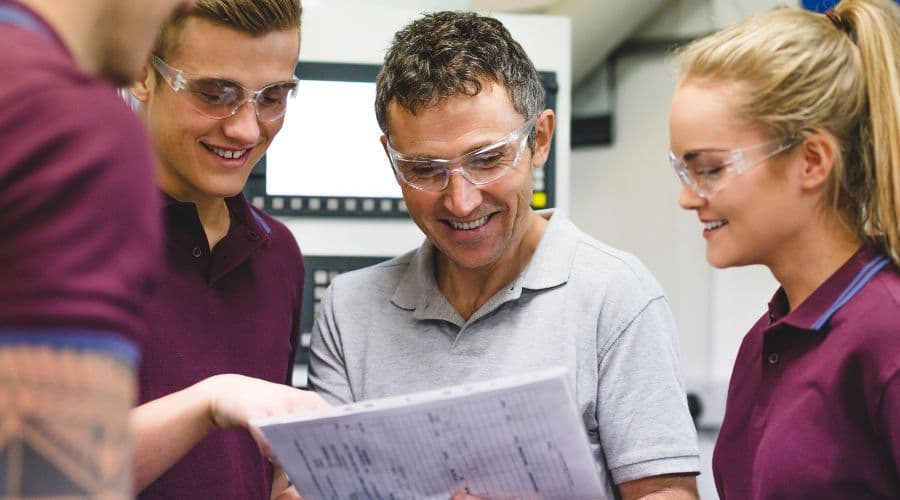The Difference Between an Apprenticeship and Traineeship

Did you know Australia’s apprenticeship system was imported from Great Britain with permanent European settlement in 1788?
And that apprenticeships are one of the few employment institutions from medieval times still recognisable today? Impressive, right?
But, enough of the history lesson. We’re here to explain the differences between an apprenticeship and a traineeship – two sought-after pathways that are sometimes confused, and a little misunderstood.
What Apprenticeships and Traineeships Have in Common
Both pathways enable you to “earn while you learn” and gain real, practical work experience while working towards completing a nationally accredited Vocational qualification (usually at Certificate level). Apprenticeships and traineeships are available full-time or part-time and can even be undertaken while at school (from working age).
The single biggest difference between the two types is time and type:
Apprenticeships typically take four years to complete and traditionally cover skilled trade areas such as engineering and metal fabrication, automotive and mechanical, construction and building and electrical specialisations.
Traineeships offer a broader range of occupational choices – anything from agriculture, to hospitality and business. The training component of a traineeship is usually shorter and can take between one to two years to complete.
Which One is Right For You?
Apprenticeships are the perfect way to learn your trade of choice. The strength of an apprenticeship over going to university after school (apart from avoiding a sizeable HECS-HELP debt) is that you’ll actually receive technical on-the-job training in real workplaces and work sites.
Apprenticeship can lead to a huge range of career options and opportunities – from earning a great living in the mines, working in small business, working on major construction projects, and even owning your own business.
Traineeships are an entrée to the world of work. For example, a business administration traineeship gives you a “taste” of a variety of functions in a traditional workplace including customer service, finance support, administration, marketing and human resources. Not bad to have on your resume, don’t you think?
Some school leavers think of a traineeship as a gap year – an opportunity to do flexible work, obtain a qualification and get paid before deciding what the future holds.
Find current apprenticeship and traineeship roles on the MIGAS Jobs Board.